
On 24 February 2022 Andriy Yermak's mobile phone rang. It was the Kremlin. Dmitry Kozak, Vladimir Putin’s deputy chief of staff, told Yermak, the head of President Volodymyr Zelensky’s office, it was time for Ukraine to surrender.
That morning at 4.15am, Russia had launched its invasion, pounding Ukrainian air defenses, radar batteries, ammunition depots, airfields and military bases. Columns of tanks poured across the border along three main axes: to the north from Belarus, to the east into the Donbas region, and to the south from occupied Crimea.
Yermak swore at Kozak and hung up.
The call, reported in a detailed account by the Washington Post, captures the defiance of a seemingly outgunned and outmanned Ukraine in the face of Russian aggression.
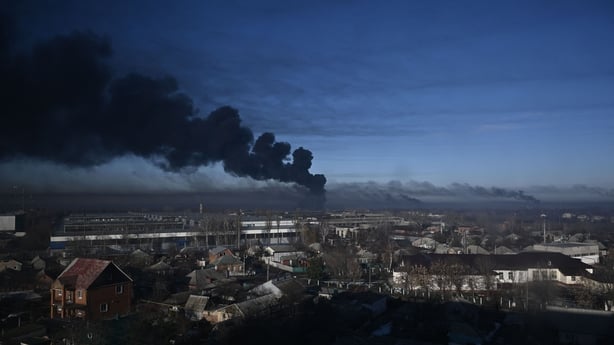
Over the past 12 months, Moscow’s hopes of a swift capture of Kyiv and the installation of a puppet regime have given way to a grinding war of attrition in the east and a humiliating realignment of Putin’s war aims.
Territory seized has been lost. Upwards of 180,000 Russian troops (including many of its best units) have been killed or wounded. Putin has been forced into a massive mobilisation of conscripts, jeopardising the tacit contract that has kept him in power: that urban acquiescence in Russian military adventures hinged on those wars being kept at a distance.
Rather than admit defeat, Putin has doubled down, depicting the war as an act of self-defence against a "collective West" bent on destroying Russia. The relentless propaganda on state television has reached surreal heights: Moscow is at war with Satanists and Nazis in Europe and America.
Speaking out risks prison.
Last year 20,000 Russians were arrested and 380 prosecuted. All independent media has been crushed, opposition figures have been murdered, jailed or have fled into exile.
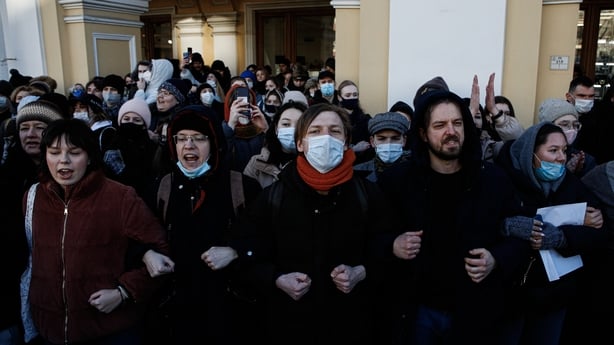
"Given the scale of the repression," writes Andrei Kolesnikov, a senior fellow at the Carnegie Endowment, "it is unrealistic to expect a mass uprising against Putin, especially since most ordinary Russians prefer to bury their heads in the sand and find some bizarre rationality and truth in the regime’s logic. People do not want to be on the side of evil, so they designate evil as good, thereby forcing themselves to believe that Putin is bringing peace."
While Ukrainians insist the country has been at war since Russia invaded Crimea in 2014, this new phase began in March 2021, when Russian forces commenced their buildup on Ukraine’s borders. The west did not seem unduly alarmed. The view was that Russia’s military chiefs had not installed the "enablers" needed to execute an invasion.
According to a study by the Royal United Services Institute (RUSI), the Kremlin was encouraged to believe that "the enablers could be brought to the [troop] formations faster than Ukraine’s partners could bring military capabilities."
When President Biden met Vladimir Putin in Geneva on 16 June 2021 Ukraine was barely mentioned. Biden told Putin of his "unwavering commitment" to Ukraine’s sovereignty and territorial integrity while Putin complained that the Maidan Revolution in 2014 was a US-instigated "coup".
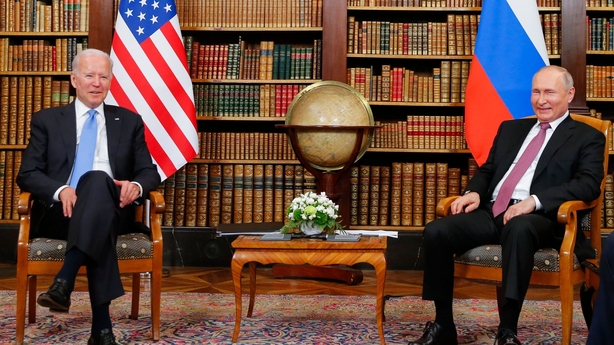
But that was it.
The warning signs were there, however.
Four days before the Geneva meeting Putin had published a 7,000 word essay, all about how the west had exploited an error by the Bolsheviks who, one hundred years earlier had given Ukraine a spurious nationhood, and was now using modern day nationalists to turn Ukraine into an anti-Russian state.
Ukraine didn’t really deserve to exist; Ukrainians and Russians were one and the same. "Our spiritual, human and civilizational ties formed for centuries and have their origins in the same sources, they have been hardened by common trials, achievements and victories," Putin wrote. "For we are one people."
Putin saw Ukraine in binary terms: there was a "neo-Nazi" cabal in Kyiv bent on antagonism towards Russia, but a majority population which had warm feelings about Moscow. "The anti-Russia project has been rejected by millions of Ukrainians," wrote Putin.
Yet, Putin was already directing the Federal Security Service (FSB) to plan the invasion. The FSB gathered intelligence on attitudes to Russia. "These surveys painted a picture of a largely politically apathetic Ukrainian society that distrusted its leaders, was primarily concerned about the economy and thought an escalation of the war between Russia and Ukraine was unlikely," the RUSI report concluded.
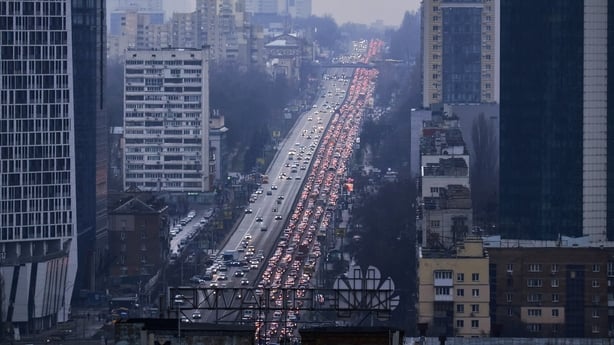
An apathetic population could be won over once the main obstacle to a reunion of Russia and Ukraine (ie, the democratically elected government in Kyiv) was removed. Russia believed it had reached military parity with the US and could easily defeat a hold-out Ukrainian army on the battlefield.
Speed would prompt the Ukrainian leadership to flee. The population would be demoralised before any mobilisation was possible. The Russian plan envisaged ground forces swiftly capturing and controlling regional administrations, attacking along two axes from the north and cutting off Kyiv via the west and east banks of the Dnipro.
They would attack from Crimea, seize the Zaporizhzhia Nuclear Power Plant, surround Mariupol, take control of bridges over the Dnipro to advance along the right bank to Voznesensk, seizing the South Ukrainian Nuclear Power Plant. Forces attacking from Kursk, Belgord and Voronezh would encircle Ukrainian troops in the Donbas region.
Air raid sirens are heard going off across the Ukrainian capital Kyiv as Russia launches a 'full-scale invasion' | Live updates: https://t.co/ncoA0VeChQ pic.twitter.com/DEwcG6slp2
— RTÉ News (@rtenews) February 24, 2022
After the initial invasion, an amphibious assault from the Black Sea along the Kherson–Mykolaiv–Odesa axis would cut Ukraine off from the sea and give Russia a free hand in launching sea-borne cruise missiles to any location across the country.
There were execution lists of senior government figures and Ukrainians who had taken part in the Maidan Revolution. Further layers of society would be intimidated into submission, or coerced and induced into collaboration.
While plans were being finalised amid extreme secrecy in Moscow, the west continued to believe Putin was either bluffing or could be persuaded that Russia’s security concerns, such as they were, could be met through dialogue. Throughout the autumn of 2021, a parade of EU leaders traipsed to the Kremlin to implore Putin not to invade. Kyiv stated publicly that it was unlikely to ever join NATO.
The west warned of swift and harsh sanctions. Moscow accused the west of "hysteria."
In December 2021, CIA director William Burns and US ambassador to Russia John Sullivan met Putin advisor Nikolai Patrushev in Moscow. According to one report, Patrushev said nothing about the invasion but made it clear that the Russian military was capable of achieving whatever its objectives might be.
Burns and Sullivan informed President Biden that Putin had decided to invade. Contrary to the decades-long norms of spycraft, Washington began publishing its intelligence. The aim was to put Putin on the defensive and to expose Kremlin lies once the attack took place.
Yet, Putin denied the truth even to his own troops and senior generals. "They did not learn of the invasion until several days or even hours before it began," wrote Dara Massicot, senior researcher at the RAND Corporation. "The secrecy was a mistake. By orchestrating the attack with just a small group of advisers, Putin undercut many of the advantages his country should have had."
Europeans were alarmed at the US warnings. President Zelensky publicly cast doubt on an invasion in order to avoid panicking the public.
The troop buildup reached some 190,000 soldiers.
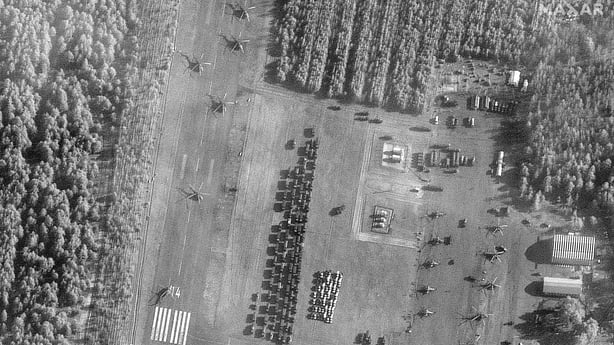
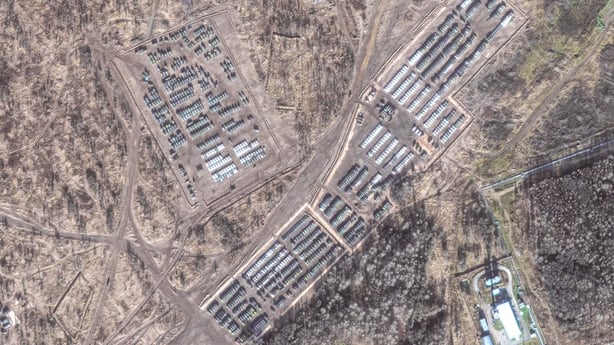
On 16 February, Putin announced a partial pull-back. The next day the Kremlin wrote to the Biden administration. Russia was not going to invade Ukraine, nor had it been planning to. However, there would be a "military-technical" response if the US did not agree to rolling back NATO’s presence in eastern Europe.
On Wednesday 23 February, the Pentagon warned that 80% of the troops mobilised on Ukraine’s borders were now in combat-ready positions.
At 11pm on Maidan Square in Kyiv, I had just finished a live broadcast into the 9pm news, reporting the latest developments. Yet, bars nearby were busy showing Champions League football. The city had been on alert for months, but did not feel overly anxious.
At 4am I was startled awake. An alert on my phone flashed that there had been explosions and gunfire at Kyiv Airport.
"We didn't sleep last night... we have no plans."
— RTÉ News (@rtenews) February 25, 2022
.@tconnellyRTE and cameraman Bram Verbeke spoke to local people in Kyiv, Ukraine | Follow live blog: https://t.co/xHIZ7zu2C7 pic.twitter.com/L7BVV1GpwZ
Europe Editor Tony Connelly and cameraman Bram Verbeke are in Rivne in western Ukraine, 320km from the capital Kyiv. | Live updates: https://t.co/Bfl1cInfIV pic.twitter.com/TAI06rNuAS
— RTÉ News (@rtenews) February 25, 2022
At that moment Russian tanks were smashing their way into Ukraine. Putin went on Russian television to say it was no more than a "special operation" to "demilitarise and de-nazify Ukraine".
Russia launched the attack with a massive fire-strike across Ukraine, preceded by widespread electronic attacks to jam radar and air-defence systems. Cruise and ballistic missiles poured in from sea, air and land-based launch systems hitting industrial, fuel and energy storage facilities, air-defence sites, command and control infrastructure, ammunition depots and troop assembly areas.
There would be a swift seizure of Kyiv. Senior Ukrainian leaders who hadn't fled would be captured and killed.
"To think the leadership of Russia would unleash such brazen, large-scale aggression, honestly speaking, I could not even imagine it," General Colonel Oleksandr Syrsky told the Washington Post. "It seemed to me that if active hostilities were to start, they would most likely start in the east, around or within the borders of the Donetsk and Luhansk regions."
"Whatever advantages Russia had were squandered. Russian troops were only told last minute they were at war. This would prove fatal to the mission"
That reflected the Ukrainian intelligence assessment. Kyiv believed Russia would attack from the east, using the disorientation of forces in the Donbas region to push forward towards the capital, since they did not appear to have enough forces to the north in Belarus to take and hold the city.
Ukraine had therefore kept ten combat brigades in the east. The Gomel axis running south from Belarus and the Crimean axis were only lightly protected.
However, one week before the attack, Ukrainian generals were worried about Russia’s long-range strike capability. They moved munitions stockpiles from the main arsenals. Just 72 hours ahead of the invasion they dispersed aircraft and air-defence systems, and with just seven hours to go there was a further redeployment of Ukrainian forces to the north and northeast.
This would prove crucial. Whatever Kyiv’s political leadership was saying, the generals seemed to know an attack was coming. But the redeployment wasn’t fast enough. "The result," notes the RUSI report, "was that many Ukrainian units were not at their assigned defensive positions when the invasion began."
Yet, whatever advantages Russia had were squandered. Russian troops were only told last minute they were at war. This would prove fatal to the mission.
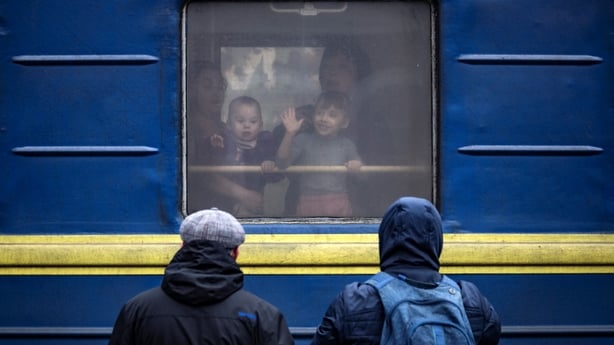
General Colonel Syrsky had organized two defensive rings, one in the suburbs, one within the capital. The hope was to keep the Russians pinned back and to keep their artillery out of range of the city centre.
According to the last-minute redeployment, Syrsky moved command posts into the field and dispersed helicopters and jets off major air bases. Since the 72nd mechanised brigade was the only one available to defend the capital, makeshift battalions and the use of artillery systems normally used for training were shifted to positions to the northeast and northwest of the capital.
Within hours of the invasion, dramatic mobile phone footage appeared of Russian attack helicopters launching missiles as they circled over rooftops. It was circulated among journalists as we huddled in the underground carpark of the Radisson Hotel.
This, it turned out, would be one of the pivotal early battles.
"The first serious flaws in Putin's master plan revealed themselves: the presumption of a speedy Ukrainian collapse meant resupply couldn’t keep up with reality"
Russia had planned the swift capture of the Antonov Air Base at Hostomel, 35km northwest of Kyiv. The plan was to use the base to land heavy troop carriers and force a bridgehead into the capital.
Two waves of 10 KA2 Alligator attack helicopters each had penetrated Ukrainian airspace thanks to the destruction of two air-defence systems north of the capital. They swooped in low over the Dnipro. The airbase was vulnerable: the most combat-ready defenders had been sent east just days before.
However, in the first wave, two helicopters were shot down by portable surface-to-air missiles. Some of Syrsky’s redeployed anti-aircraft units then moved in, forcing Russian pilots to withdraw their helicopters into nearby woods.
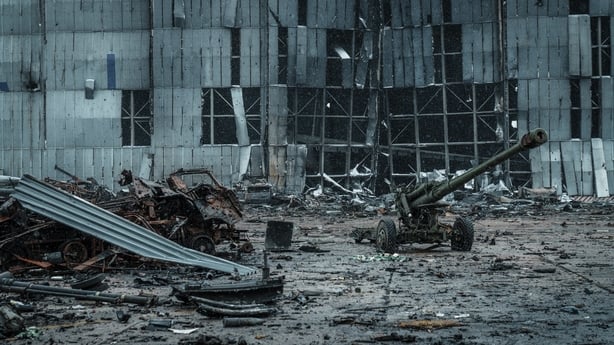
Despite the setback, better equipped elite Russian troops continued to attack Hostomel’s defenders, by then running low on ammunition. A chaotic retreat was ordered; some Ukrainian national guardsmen were captured.
Ukraine’s commander-in-chief, General Valery Zaluzhny insisted the airport be recaptured. Elite Ukrainian units joined the 72nd mechanised brigade in a battle which lasted days. Ukraine managed to attack the runway, making it impossible for huge cargo planes to land.
"That they were able to storm the airfield and take control of it in the course of a few hours, on the one hand, played a negative role [for us]," Syrsky told the Washington Post. "On the other hand, the artillery fire aimed at the runway and disembarkation sites delayed the landing significantly and frustrated the plan to capture Kyiv, because we know now that in principle the enemy allocated a maximum of up to three days for the capture of Kyiv."
But Moscow had a foothold. Prevented from using Hostomel runways, Russian troops fanned out into nearby suburbs, including Bucha and Irpin, which would later become synonymous with war crimes. But instead of capturing Kyiv in three days, Russia was now held up; crucially a 60km-long Russian resupply convoy ground to a halt north of the capital.
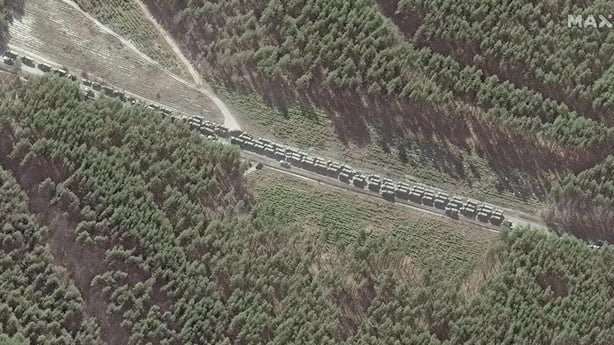
Thus began the chaos, as Ukrainian forces used Javelin anti-tank weapons - as well as superior terrain knowledge - to harass the convoy. Russian tanks that were not destroyed broke down or ran out of fuel. Some were towed by Ukrainian tractors.
The first serious flaws in Putin’s master plan revealed themselves: the presumption of a speedy Ukrainian collapse meant resupply couldn’t keep up with reality. Poorly armed and fed troops, using mobile phones which betrayed their positions, and who knew nothing of their orders till the last minute, were badly exposed.
"They had no air defense protection, there were long columns, not enough fuel, not enough food for soldiers who ended up ransacking shops," says Stanislav Secrieru, senior analyst at the European Union Institute for Security Studies (EUISS). "They didn't have enough secure communications. To execute a complex, multi-level, multi-directional attack, you need really good communications in order to ensure coordination between different units, avoid friendly fire and to outplay your enemy."
Ukraine was not being outplayed, but a victorious defence of Kyiv was by no means assured.
As the battle for Hostomel airport raged, Russian scouts entered the wooded commuter village of Moschun, just across the Irpin River and only 26km northwest of Kyiv.
It was poorly defended, but the woods and waterway allowed Ukrainian troops to attack Russians moving men and materials across the river from Hostomel. By 6 March, Russian troops had managed to force their way across in numbers.
On 11 March, Russian forces stormed Moshchun from all sides, but fresh Ukrainian tanks and more experienced fighters managed to keep the attack at bay. With Russian troops pinned down in Irpin, they decided to concentrate on Moschun in order to strike at the capital.
"This was probably the most critical moment, when I thought, 'Well, is this really going to be it? [Taking] Moshchun means entry into Kyiv," Syrsky told the Washington Post.
The general bought time by sending Ukrainian special forces behind Russian lines to blow up a sluice gate on the Irpin River. It was a bold and decisive move: the waters swelled a nearby reservoir and Russian positions were flooded.
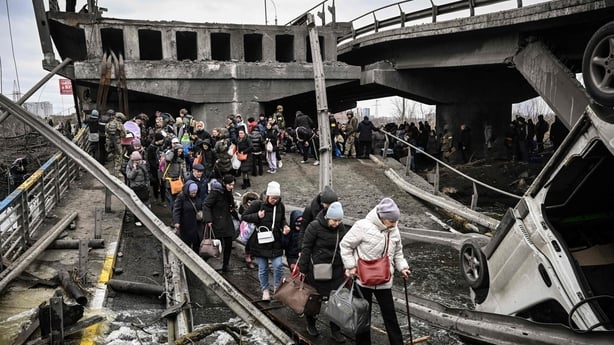
But the fighting around Kyiv continued.
By the third week of March, Russian paratroopers landed on the Ukrainian side of the Irpin near Moshchun. The Ukrainians brought in a fresh battalion, rotating troops when they became exhausted, and successfully blocked Russian progress towards Moschun with artillery fire, eventually pushing them back across the river.
Moscow’s attack on Kyiv was beginning to crumble.
Throughout March, Ukrainian troops recaptured settlements dotted to the north and east of Kyiv as Russia’s resupply problems began to mount.
On 29 March, Russia’s deputy minister for defence Alexander Formin announced that Russia was withdrawing from the Kyiv region. Moscow would now "reposition" its troops to fully capture the regions of Donetsk and Luhansk.
The leading military analyst Michael Kofman told the New York Times: "The initial Russian operation was a failure and one of its central goals — the capture of Kyiv — proved unobtainable for Russian forces."
Any sense of victory was tempered by what Ukrainian troops found when they liberated Bucha, to the northeast of Kyiv. On 1 April evidence of a massacre of some 400 civilians emerged.
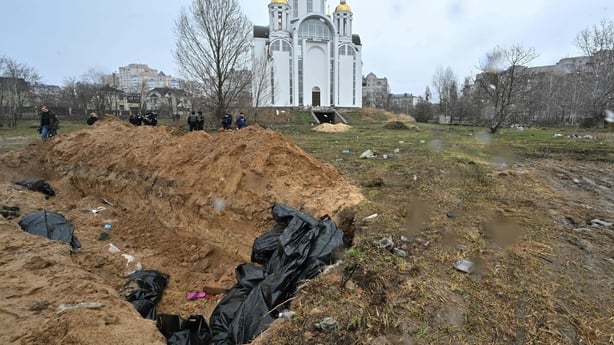
But the Russian retreat from Kyiv changed the course of the war. Ukraine had repelled one of the world’s most powerful armies, Zelensky and his senior ministers had not fled, and the democratic government had survived.
"We often underestimate morale," says Stanislav Secrieru, of the EUISS, "but when soldiers know the mission, when they know they are defending their country, and especially knowing if they don't hold the ground, their loved ones who are behind have no chance of surviving given what happened in Bucha, then it doesn't leave you that big a choice."
But Russia’s retreat from Kyiv would not end matters.
Ukraine had feared the encirclement of its troops in Donbas, where they had been fighting Russian and Russian proxy forces since 2014. The Kremlin’s change in strategy was also designed to force Kyiv into peace talks on unfavourable terms.
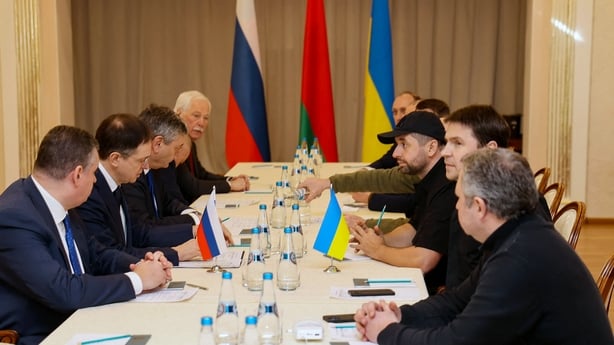
"Russian efforts to rapidly decapitate the Ukrainian government followed by a speedy seizure of the capital Kyiv, both failed, largely due to considerable weaknesses in the planning, tactics, training and command of Russian land and air forces," writes Ben Barry, senior fellow for land warfare at the International Institute for Strategic Studies (IISS). "But Russia adapted its strategy, seeking to eject Ukrainian forces from the Donbas by concentrating large amounts of artillery to inflict a high level of attrition."
That war of attrition took a huge toll on both sides. Russia was firing up to 20,000 artillery shells per day. In July, Russian forces captured Lysychansk and Sievierodonetsk, the last two Ukrainian strongholds in the Luhansk region, but only at the cost of thousands of lives for little territorial gain.
While Putin proclaimed the news as a major victory, the influential former Russian military commander Igor Girkin noted, according to the Institute for the Study of War (ISW), that "the Ukrainian defense of Lysychansk was deliberately designed to inflict maximum damage on Russian troops and burn through Russian manpower and equipment."
By summer the Ukrainian army was using US-made HIMARS (high-mobility artillery rocket systems) to lethal effect, especially around Kherson to the southeast, hitting Russian ammunition dumps, supply lines and troop concentrations from a distance (Russia’s dependence on rail networks to send weapons to the frontline meant munitions stockpiles were easily identifiable and highly vulnerable).
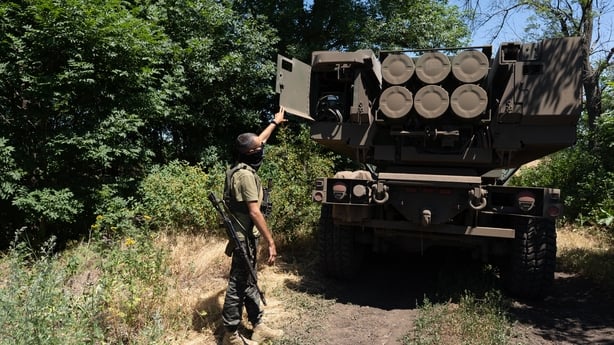
Fearing a counteroffensive in Kherson, Russia moved troops from Kharkiv. But it was an act of deception: in September Ukrainian commanders launched a lightning counteroffensive not in Kherson but in Kharkiv.
The significance of the counteroffensive cannot be overstated. Up to that point, the west’s calculations were that, having successfully defended Kyiv against all the odds, Ukraine should cut its losses and negotiate with Putin, thus avoiding months more bloodshed.
Kharkiv, and the eventual liberation of Kherson, the only regional capital that Russia had captured and held, prompted a belief that Ukraine could not only not lose, but could actually win the war.
"Ukraine’s Kharkiv offensive destroyed the illusion of Russian invincibility," wrote Liana Fix and Michael Kimmage in Foreign Affairs in September. "It has also heralded a new stage in the west’s expectations. Suddenly, Western leaders and strategists have been able to contemplate Ukraine gaining the upper hand in this war. This shift in perspective seems certain to unleash a new dynamic of military support for Ukraine."
That dynamic has delivered weapons that were once taboo, most recently main battle tanks, such as Leopard 2 vehicles, German-built and held in significant stocks by many European armies. The incrementalism of the early months was giving way to a determination that Ukraine be given the weapons it needs to win the war.
Underestimating Russian resolve, as many experts have pointed out, is a mistake. Yet, the repeated blunders by Putin have forced him into ever more drastic responses, each of which have further limited his room for manoeuvre and lost him residual international support.
His threats to use nuclear weapons, not only against Ukraine but also against the west, prompted a warning from Beijing that such rhetoric should be dialled down. His ruthless assault against Ukrainian energy infrastructure has inflicted misery, but in a relatively mild winter, it has galvanised Ukrainian resilience and western support rather than brought the country to its knees.
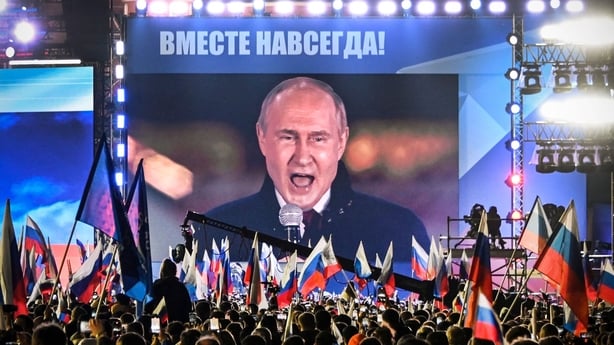
Putin’s illegal annexation of the regions of Kherson, Luhansk, Donetsk and Zaporizhzhia in September gave him a grandiloquent TV opportunity, but it was clear to all that Russia could not hold on to the territory it had annexed. Nationalist and military bloggers in Russia savaged military leaders online, prompting a reprimand from Putin’s spokesman Dmitri Peskov.
In December Putin was forced into admitting that conquering all four regions would be a "long process."
"Despite hopes to the contrary," writes Dara Massicot in Foreign Affairs, "it is too soon to say that Russia’s campaign will collapse. Putin is certainly digging in for the long haul, and although wounded, the Russian military is still capable of complex operations, adaptive learning, and withstanding a level of combat that few militaries in the world can."
Russia is making better use of electronic warfare to jam Ukrainian communications without jamming its own. Moscow is also capitalising on supplies of Iranian Shaheed drones to hit infrastructure (and residential buildings) in order to keep its air force intact. By January Russia had knocked out 40% of Ukraine’s energy infrastructure. More powerful ballistic missiles were evading Ukrainian air defences.
Russia has also been moving command posts and logistics depots out of the range of Ukrainian HIMARS. After its withdrawal from Kherson, which was more orderly than the Kharkiv route, Russia has built layers of formidable defences in the south. Combined with the mobilisation of 300,000 conscripts in the autumn, these factors mean that a Ukrainian counteroffensive will be more costly.
"I don't think Russia has given up on its objective to cut Ukraine fully from access to the Black Sea"
Yet, on the ground there are indications that Moscow is still squandering huge numbers of troops and equipment when assaulting Ukrainian held towns and cities in the east.
There has been much commentary about Putin’s willingness to throw tens of thousands of untrained, ill-equipped troops to their deaths in Ukraine. Whatever about what it says about the Russian leadership’s value of human life, such tactics inhibit Russia’s ability to fight smarter.
"There is a disregard for the life of soldiers which slows down the Russian process of learning," says Stanislav Secrieru, of the EUISS. "When you don't care about the lives of soldiers, when you just send them in waves, and when you simply mobilize even more, you have fewer incentives to learn."
As we face into the first anniversary, both Ukraine and NATO say a fresh Russian offensive is already under way in the east. According to Foreign Policy, the Ukrainian military estimates Russia already has 1,800 tanks, 3,950 armored vehicles, 2,700 artillery systems, 810 Soviet-era multiple-rocket-launch systems, 400 fighter jets, and 300 helicopters ready for the offensive.
What every analyst struggles with is, what is Russia’s long-term goal, and how long will the war go on?
Russia may be seeking to maximise the ground it has captured before Ukraine receives western battle tanks. Alternatively, Putin will want to grind out full control of the Donbas region, harden a defensive line, and then turn the war into a frozen conflict which leaves Ukraine perpetually unstable, with the option then of rebuilding his military and having a second attempt.
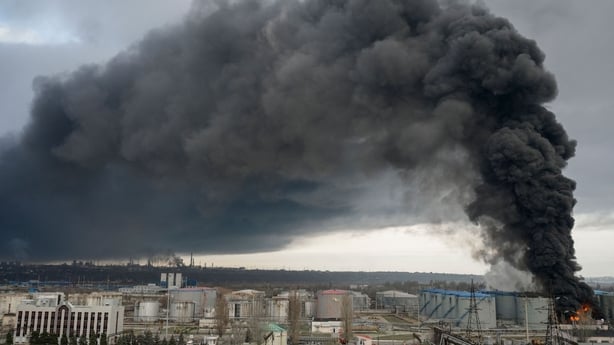
"They will try to gain control of all the annexed regions," says Stanislav Secrieru, of the EUISS. "But I don't believe that they are going to stop there. If they take Kherson, Zaphorzhzhia, all of Donetsk, will they say, we stop here, we have achieved our objectives? Why should they not keep going to Mikolayev and Odesa? I don't think Russia has given up on its objective to cut Ukraine fully from access to the Black Sea."
Others believe that Putin has never sought to conquer Ukraine, a huge country with a population of 43 million, but to subjugate it and turn it into a pro-Russian client state.
"They went into it with the intention of having a Ukraine that was friendly to Russia," says Olga Oliker, International Crisis Group (ICG) director for Europe and Asia. "This has obviously not gone well."
Oliker says that at the outset, western governments believed Russia would succeed militarily and, having installed a puppet regime in Kyiv, would create a new Cold War in Europe, "with everybody building up weapons, lots of military exercises, lots of deterrents."
Thanks to Ukrainian resilience, western weapons and intelligence, that has not happened. Instead, the West’s current concern, one year on, is to support Ukraine and weaken Russia so that it is unable to pose a long-term threat to Europe.
"...the likelihood is it will get bloodier"
"That's not driven by values or morals or principles of sovereignty as such, though they're happily aligned with those," argues Oliker. "It's driven by the view that a Russia that succeeds in Ukraine, in part because of nuclear threats, and certainly as a result of unprovoked aggression, is going to be dangerous for European security."
After Russia invaded Crimea in 2014 and fomented a proxy war in eastern Ukraine, the NATO posture in eastern Europe was designed to prevent a Russian attack on Estonia or Poland. In other words, it was not designed to prevent a further Russian attack on Ukraine.
Now that Russia has invaded Ukraine, NATO is still building up its defences around the Baltics and eastern Europe, but the overall picture for European security looks a lot more perilous.
"[NATO] might continue to prevent attacks on Estonia or Poland," says Oliker, "[but] there are going to be new hotspots, whether that's in Ukraine, or in Moldova, or in Georgia. The next crisis is going to be that much more dangerous because of the self-flagellation of everybody on both sides, thinking that they screwed up in 2022-2023 in Ukraine."
That does not suggest a swift resolution to the war, and the likelihood is it will get bloodier, and it points to a darkening standoff with Putin’s Russia into the future.
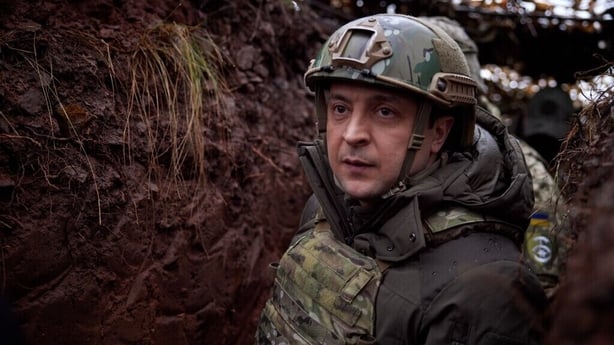
Ukraine’s advantage is that more advanced and heavier weapons will continue to arrive. Its will to fight is as strong as ever, and it believes that its future survival requires the expulsion of Russian troops from all of Ukrainian territory, including Crimea.
Washington is careful to say that only Kyiv will determine when peace talks are appropriate, although many in the US defence establishment believe Crimea may (literally) be a bridge too far.
Yet, politically international support for Ukraine remains solid, and Europe has weathered the shock non-availability of Russian gas despite high energy inflation.
What’s more, that support has been institutionalised. The Ramstein Group of some 50 countries committed to defending Ukraine meets monthly; the EU is on its tenth package of rolling sanctions against Russia, and has pledged €3 billion per month in assistance into the future to keep the economy going.
Ukraine was given swift EU candidate status, further locking the country into the west.
Russia’s motivation will be driven by damaged pride and the risk that Putin, having paid a gargantuan price in Russian blood and treasure, will have to forsake his ambition of controlling Russia’s neighbourhood.
As the one-year anniversary approaches, there are only grim horizons.
There is no clear logic which says that 'X’ amount of territory or security concessions being ceded to Russia will hasten peace.
Only when one or both parties decide they have more to gain from cutting a deal than continuing to fight, then some kind of logic will materialise.
But we are not there yet.







